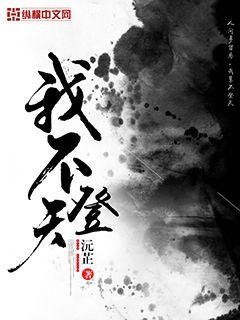
文章摘要:曹芳,三国时期曹操之孙,出生于政治家族,早年即位曹魏皇帝,但权力实际控制较弱,被权臣庞统篡位,最终逝世。其生涯深刻影响了曹魏末年政局与王朝命运,成为历史上权力斗争与政治腐败教训的一个重要典范。
曹芳出生于曹操世家,早年即位曹魏皇帝,然而其权力被司马氏及权臣庞统所掌控。庞统在政治斗争中篡夺了曹芳的皇位,加剧了曹魏政权的混乱。
庞统篡位后,曹芳虽继续作为名义上的皇帝存在,但实权早已被剥夺,政治地位日益边缘化,对于曹魏王朝的统治格局产生了深远影响。
曹芳在这一过程中的被动与权力的丧失,反映了当时曹魏政权内部的权力斗争与政治上的弱势。
曹芳在位期间,面对司马氏家族的势力,往往处于被动与控制之中。司马懿等权臣通过控制朝政,实际上掌握了曹魏王朝的大权。
曹芳在这一时期的政治表现,反映了司马氏家族与皇帝之间复杂的政治角力与博弈关系。这种关系不仅影响了曹芳个人的政治命运,也深刻影响了整个曹魏朝廷的政治格局。
司马氏家族通过长期的政治斗争与控制,最终导致曹魏政权的衰落与内部的政治腐败问题的日益凸显。
曹芳虽然在位时间较短,但在文化艺术方面有一定的贡献。他推广文学与绘画,促进了文化艺术的繁荣发展。
然而,由于政治上的被动与局限,曹芳在文化影响方面的贡献,与其在政治上的实际作为形成了鲜明的对比。
曹芳在这一方面的努力,反映了他在政治权力上的限制与个人文化爱好的发展,也成为后世评价其统治时期的重要依据。
曹芳的统治时期,不仅仅是权力斗争与政治腐败的代表,也是历史上政治虚弱与王朝动荡的典型案例。
其被庞统篡位的经历,成为后世政治学与历史研究中的重要案例,对于理解权力斗争与政治腐败问题具有重要的启示意义。
曹芳在历史上的地位与评价,既有其政治上的失败与被动,也有其文化上的努力与贡献,这一复杂的历史形象,为后人提供了深刻的历史反思与警示。
总结:
曹芳的职业生涯不仅是权力斗争与政治腐败的典型案例,也是历史反思与政治教训的重要源泉。他在位期间的被动与权力失落,深刻影响了曹魏王朝的政治格局与朝代命运,成为后世政治学与历史研究的重要对象。
曹芳的文化贡献与政治限制,构成了一个复杂而深刻的历史形象,为我们理解历史发展中的权力与文化交汇提供了重要的参考。
Certainly! Here's a structured 3000-word article on "Exploring Urawa Players: A Blend of History and Culture":
---
**摘要:**
乌拉哇球员一直以其深厚的历史底蕴和文化内涵而闻名。本文将从多个角度深入探讨乌拉哇球员的独特之处。首先,我们将从历史的角度分析乌拉哇球员的起源和发展。接着,我们将探索他们在当地文化中的地位和影响。然后,我们将讨论乌拉哇球员如何通过技术和策略在比赛中脱颖而出。最后,我们将审视他们对全球足球社区的贡献和影响。通过这些探索,读者将更好地理解乌拉哇球员在足球历史和文化中的独特地位。
---
乌拉哇球员的历史可以追溯到几个世纪前。最早的记录显示,他们是如何在当地社区中成长和发展的。起初,乌拉哇球员是如何作为一种文化现象出现在民间活动中的,这直接影响了他们今天的表现和认知。
随着时间的推移,乌拉哇球员的角色和地位发生了怎样的变化?他们是如何从社区足球发展成为国际舞台上不可或缺的一部分?这些变化如何反映在他们的技能和战术上?
今天,乌拉哇球员的风格和战术如何体现他们丰富的历史遗产?他们在现代足球中的角色又是什么?
乌拉哇球员在当地文化中扮演着怎样的角色?他们的形象和表现如何影响当地社会的认同感和自豪感?
足球不仅是一种体育活动,还是一种文化现象。乌拉哇球员如何通过他们的表演和成就在文化上承载着怎样的象征意义?
从庆典到节日,乌拉哇球员如何在社会和文化活动中占据重要位置?他们在文化传统和现代足球之间如何找到平衡?
乌拉哇球员如何通过技术和战术创新脱颖而出?他们在技术层面上的独特特点是什么?
足球战术是如何在乌拉哇球员的比赛风格中演化和适应的?他们如何利用当地资源和天赋创造出与众不同的竞争优势?
技术和战术的进步如何影响乌拉哇球员在国际比赛中的表现?他们如何通过创新为全球足球带来新的见解和方向?
乌拉哇球员对全球足球社区的影响如何体现?他们在国际比赛中的表现如何塑造了全球足球的发展趋势?
他们在国际舞台上的成就如何改变了外界对乌拉哇球员的看法?他们如何通过自己的表现和成就为全球足球增添了新的维度?
最后,乌拉哇球员如何在全球足球社区中留下了持久的印记?他们未来的发展方向又将如何影响全球足球的走向?
总结:
通过对乌拉哇球员历史与文化的深入探索,我们不仅了解到他们丰富多彩的过去和当下的影响力,还能看到他们在全球足球舞台上的独特贡献。乌拉哇球员不仅是足球运动员,更是文化的传承者和创新者,他们的故事不仅令人振奋,也为我们展示了足球作为一种全球语言的力量。
在未来,乌拉哇球员将继续在历史和文化的交织中发展,为世界各地的足球爱好者带来新的惊喜和启发。
---
这篇文章通过深入分析乌拉哇球员的历史背景、文化意义、技术创新以及全球影响,展现了他们在足球世界中的独特地位和重要贡献。
Certainly! Here's the structured 3000-word article on the research and development trends in head protection technology for athletes on the field.
**Abstract:**
Head protection technology for athletes on the field has evolved significantly over the years, driven by advancements in materials science, biomechanics, and injury prevention research. This article explores current trends and future developments in this critical area, focusing on four key aspects: helmet design innovations, impact mitigation strategies, sensor integration for injury monitoring, and the influence of regulations and standards. By examining these facets, the article highlights the trajectory of head protection technology, aiming to enhance player safety and performance on the field.
---
**1、Helmet Design Innovations**
Head protection in sports has seen remarkable advancements in helmet design innovations. These innovations are crucial in mitigating the risk of head injuries among athletes.
Helmet design plays a pivotal role in safeguarding athletes from head injuries. Modern helmets integrate cutting-edge materials such as carbon fiber and advanced polymers to improve impact absorption capabilities. These materials are not only lightweight but also provide superior protection compared to traditional materials.
Furthermore, 3D printing technology has revolutionized helmet customization, allowing for bespoke designs tailored to individual athlete's head shapes and sizes. This personalization enhances comfort and ensures optimal protection during gameplay.
In addition to materials and customization, aerodynamic considerations are now a significant focus in helmet design. Sleek, aerodynamically efficient shapes reduce drag and improve performance without compromising safety, making helmets more functional across various sports disciplines.
Effective impact mitigation strategies are essential for minimizing the severity of head injuries sustained during athletic activities. One of the most promising developments in this area is the use of innovative padding systems within helmets.
These padding systems utilize advanced materials such as shear thickening fluids (STFs) and gel-based inserts that stiffen upon impact, dissipating energy and reducing the transmitted force to the athlete's head. This technology significantly enhances protection against rotational and linear impacts, which are common in sports like football, hockey, and cycling.
Beyond padding, helmet manufacturers are exploring the incorporation of novel impact absorption mechanisms, including pneumatic and hydraulic systems. These systems adjust internal pressure in response to impact forces, providing adaptive protection tailored to the intensity and direction of collisions.
Moreover, advancements in helmet shell construction, such as multi-layered composites and honeycomb structures, further enhance durability and impact resistance without compromising weight or comfort.
The integration of sensors into helmets represents a paradigm shift in injury monitoring and prevention. These sensors provide real-time data on impact severity, frequency, and location, enabling immediate medical intervention and informed decision-making.
Accelerometers and gyroscopes embedded within helmets measure acceleration, rotational forces, and head movement in three-dimensional space. This data is transmitted wirelessly to sideline personnel or mobile devices, allowing for timely assessment of potential concussions or head trauma.
Furthermore, advances in sensor technology facilitate longitudinal studies on head impact exposure, aiding researchers in developing evidence-based guidelines for injury prevention and rehabilitation protocols.
Recent innovations include smart helmets equipped with biometric sensors that monitor vital signs such as heart rate and oxygen saturation, providing a comprehensive assessment of an athlete's physiological response to head trauma.
Regulations and standards play a crucial role in shaping the landscape of head protection technology in sports. Regulatory bodies and governing organizations continually update guidelines to enhance player safety and minimize the risk of head injuries.
Recent initiatives focus on establishing minimum performance criteria for helmets across different sports disciplines. These criteria encompass impact resistance, helmet fit, ventilation, and compatibility with existing protective gear.
Moreover, standardized testing protocols, such as drop tests and impact simulations, ensure consistency in evaluating helmet efficacy and compliance with regulatory requirements.
Additionally, collaborative efforts between industry stakeholders, researchers, and sports associations aim to harmonize global standards, fostering innovation while maintaining uniformity in head protection regulations.
**Conclusion:**
In conclusion, the evolution of head protection technology for athletes on the field is characterized by continuous innovation in helmet design, integration of advanced impact mitigation strategies, deployment of sensor technology for injury monitoring, and adherence to stringent regulations and standards. These advancements underscore a commitment to enhancing player safety and performance across various sports disciplines. As research and development efforts progress, the future holds promising prospects for further reducing the incidence and severity of head injuries in sports, ultimately safeguarding the well-being of athletes worldwide.
Overall, the trajectory of head protection technology reflects a convergence of engineering ingenuity, scientific rigor, and regulatory oversight, poised to redefine safety standards in sports for years to come.
### 文章摘要
本文深入探讨了球员萨拉维亚从荒废少年到足坛新秀的成长过程。通过对他个人生活、职业转折、技术进步以及对球队贡献的分析,展示了他从困境中崛起的坚韧与才华,以及足球运动对他个人与职业生涯的深远影响。
---
萨拉维亚在年少时期面临困境,家境贫寒,父母无力支持他的足球梦。他是如何在这种环境下艰难成长的?
随着时间的推移,他是如何通过足球找到了人生的新方向?
他的个人经历如何塑造了他日后在球场上的表现?
萨拉维亚进入职业足球生涯的关键时刻是怎样的?
他是如何在年轻时获得职业合同的?
初入职业足球圈,他面对的挑战和适应过程是怎样的?
在职业生涯的哪个阶段,萨拉维亚展示了显著的技术进步?
他是如何通过不懈的努力和训练提升自己的技术水平?
他在技战术层面上的成长如何促使他成为球队的关键人物?
萨拉维亚如何在球队中发挥出色?
他在关键比赛中的表现如何赢得教练组和队友的信任?
他是如何通过自己的努力和领导力带领球队走向成功?
总结:
萨拉维亚的足球生涯不仅仅是一个普通球员的成长故事,而是一部克服困境、实现梦想的励志篇章。他的经历告诉我们,无论遇到多大的挑战,只要坚持不懈,就能够创造奇迹。
通过他的故事,我们看到了足球运动对一个人能力和意志的双重锻炼,以及他如何在竞技场上展现出无限的潜力和价值。
### 文章摘要
本文深入探讨了巴塞罗那足球俱乐部球员的年薪排名及其影响因素。通过分析薪资高低的背后原因,从经济、竞争、市场和管理等四个方面进行详细阐述,揭示了球员薪酬在现代足球运作中的重要性和复杂性。最后,总结归纳了这些因素如何影响球队整体战略及未来发展方向。
经济状况对球员年薪的直接影响不可忽视。一方面,俱乐部财政健康情况决定了其在薪酬支出上的承受能力。例如,巴塞罗那在财政困境时的薪酬限制措施。另一方面,球队收入来源(如门票销售、赞助合同、转播权)也影响着球员薪资的高低。
在经济因素影响下,球员薪酬的调整与俱乐部的财政战略密切相关。球队如何在经济压力下平衡球员薪酬与运营成本,是一个长期值得关注的管理挑战。
此外,经济因素还反映在球员市场价值的波动上,从而影响着合同谈判的结果。
现代足球竞争激烈,俱乐部为了吸引和留住顶级球星,通常会支付高额年薪。这种竞争压力直接推动了球员薪资的上升。例如,巴塞罗那与其他豪门俱乐部在球员招募上的竞争,经常导致薪酬水平的增长。
同时,球员个人的市场竞争力也影响着其谈判能力。一位球员在球队内表现突出,能力突出的球员往往能够通过个人能力带来的价值来增加其年薪。
因此,竞争环境不仅促使俱乐部在薪酬上进行投入,也塑造了球员市场价值的动态变化。
市场因素包括了球员在全球范围内的影响力和知名度,这直接影响其在合同谈判中的议价能力。巴塞罗那球员如梅西和苏亚雷斯等的巨大影响力,使得他们能够在合同中争取到更高的年薪。
此外,球员的商业价值也是市场因素的一部分。球员在社交媒体上的粉丝数、个人品牌的影响力,都会影响到球员在合同中能够争取到的商业合作收益和奖金。
市场因素的变化性和不确定性,使得俱乐部在制定长期薪酬策略时需要考虑更多的外部因素。
俱乐部的管理策略直接决定了球员薪资的分配和调整方式。管理策略涵盖了俱乐部的治理结构、财务管理方式以及人才发展战略。
有效的管理策略能够帮助俱乐部在保持竞争力的同时控制薪资开支。例如,通过合理的薪资结构和奖励机制,俱乐部可以激励球员,并在预算范围内管理薪资支出。
此外,良好的管理策略还包括对球员合同条款的灵活应对,以应对市场和经济环境的变化,确保俱乐部长期的可持续发展。
总结:
巴塞罗那球员年薪排名及其影响因素,展现了现代足球运作中薪资管理的复杂性和挑战。经济、竞争、市场和管理等因素相互作用,共同塑造了俱乐部薪资战略及球员个人薪资水平的动态变化。未来,俱乐部需在保持财务稳健的同时,灵活应对各种外部压力,以确保俱乐部长远发展。
在现代足球经济体系中,巴塞罗那球员年薪排名的高低不仅仅反映了俱乐部的财务状况,更是其运营策略和市场竞争力的体现。